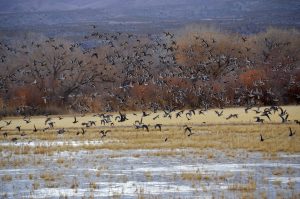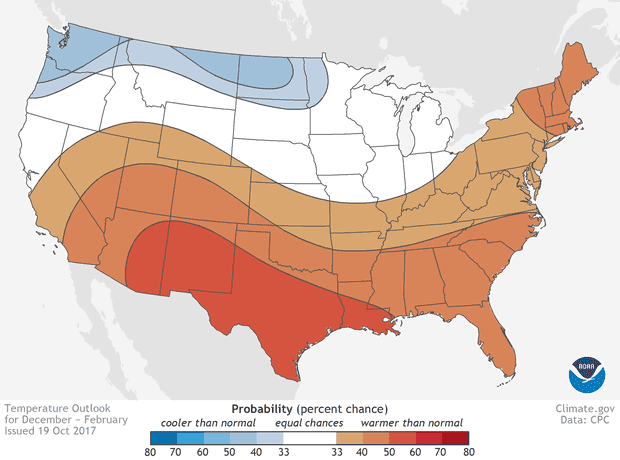Tick-borne diseases are on the rise.
The following article highlights some of the top trends that are contributing to this increase, including environmental and other natural factors as well as shifts in human behavior and advances in clinical diagnosis. Being aware of these trends can help you and your loved ones better prepare for any increased risk of exposure to ticks and tick-borne diseases today and in the future.
Scientists note a steady increase in Lyme disease, the most prevalent tick-borne disease.((https://www.cdc.gov/cdcgrandrounds/pdf/archives/2017/march2017-H.pdf))

Warmer Winters Mean More Ticks—and Longer Tick Seasons

Many states across the United States have experienced unseasonably warm winters for the last five or so years, according to data from the National Oceanic and Atmospheric Administration (NOAA). This warming trend can affect tick populations and activity levels in a number of ways.
As most ticks are dormant during the winter, warmer weather doesn’t have a huge impact on their survival rates. However, milder winters can make it easier for tick hosts, such as deer and mice, to survive winter months, providing ample food sources for ticks to thrive on the following year.
Certain ticks may also be more active during mild winter months. Deer ticks or blacklegged ticks (Ixodes scapularis), for example, are active year-round but tend to hunker down when temperatures are below freezing. These ticks can transmit a number of serious diseases to humans, including Lyme disease, Powassan, Babesiosis and Anaplasmosis.
Additionally, warmer weather means they can be on the hunt for hosts more frequently throughout winter months.
Finally, warmer winters and springs can make it possible for tick eggs to hatch a little earlier and for nymphs to venture out and start feeding on larger hosts earlier, resulting in a potentially longer tick season.
Experts note that this past winter’s mild temperatures will likely lead to worse tick seasons than normal in several regions of the U.S., including Michigan and Tennessee.
In 2017, scientists from the NOAA predicted that the 2017-2018 season would be the third warmer-than-average winter in a row. This warming trend has continued into 2019-2020.(( https://www.climate.gov/news-features/blogs/enso/winter-coming-noaa%E2%80%99s-2017-2018-winter-outlook))
An Unusual Season for Trees Helps Tick Populations Flourish

One reason why tick populations are increasing has to do with something you might not naturally think of: trees.
Trees don’t typically produce a lot of acorns each year, but in a “mast year”— which happens only a few times a decade — they can produce up to 100 times their normal amount. 2019 was a mast year for oak trees in the United States, which resulted in a bumper crop of acorns in certain regions of the country, particularly the Northeast.
As in other mast years, all those extra acorns have provided a bounty of food for rodents and pests, including white-footed mice, which are prime carriers of Borrelia burgdorferi, the bacterium that causes Lyme disease. Over the coming years, all those mice will serve as ideal hosts for ticks—including the blacklegged tick. Unlike many other tick hosts such as deer and squirrels, mice don’t typically groom off ticks, which increases the likelihood that the ticks feeding on them will become infected.
The larvae that feed on these mice will go on to feed on larger hosts, including humans, in subsequent tick seasons.
As Humidity Levels Rise, So Does the Likelihood of Tick-Human Interactions
Although ticks can live and thrive in a variety of locations and environments, their questing behavior—or their efforts to seek out and attach to hosts—can differ from region to region.
A 2017 study showed that increasingly humid environments in the Northeast region of the United States are making it easier for ticks to venture up from moist ground cover during questing. This can increase the likelihood that they can latch on to humans and pets as they walk past grassy areas, logs, wood piles or other above-ground perches. This contrasts to dryer environments, where ticks tend to stay close to the ground in leaf litters and around tree roots, where moisture levels are higher.
Bird Migration Expands Tick Populations, Varieties and Habitat

Every year, migratory birds transport as many as 39 million different neotropical ticks from Central and South America to different regions of the United States. A recent study to determine the effect of bird migration on the spread of ticks across America found that this trend is not only increasing tick populations nationwide, but it is also introducing ticks to new regions and habitats.
In addition, scientists found that some of these ticks were infected with spotted fever bacteria, Rickettsiae. Since many of the transported ticks were in the larval or nymphal stage, they could still become infected with pathogens for other tick-borne diseases.((https://globallymealliance.org/lyme-disease-spread-migratory-birds/)) ((”The Postential Role of Migratory Birds in the Spread of Tick-borne Infections in Siberia and the Russian Far East,” Achievements in Life Sciences, Far Eastern Federal University, Vol. 8, Issue 2, October 2014. https://www.sciencedirect.com/science/article/pii/S2078152015000061))
Similar findings have been reported in studies on the potential role of migratory birds in the spread of tick-borne diseases in Europe and Asia. In one study, for example, researchers found that ticks on migratory birds in Siberia and Far East Russia were infected with eight species of pathogens, including those that cause Lyme disease, Spotted Fever, Babesiosis, Bartonellosis, Ehrlichiosis, and Anaplasmosis.
Homes Encroaching on Tick Habitat

Another important trend that has contributed to the higher incidence of tick-borne diseases is changes in land use, including reforestation and suburbanization, that can result in changes in or reduction of biodiversity. These changes have several consequences that can lead to an increase in tick-borne diseases, such as:
- The shifting of disease-causing germs to new hosts, as in the cases of diseases like Ebola and Zika virus
- Increased human activity in tick habitats, including everyday activities like walking and gardening
Most ticks live in wooded areas, meadows, and grasslands, where hosts like deer, squirrels, mice, birds, and other rodents thrive. In the past, people encountered ticks only occasionally while engaging in recreational activities, hunting, or other outdoor activities. Suburbanization, however, has significantly changed the frequency of human exposure to tick habitats, as homes and neighborhoods increasingly expand into environments where tick populations thrive. Research by the World Health Organization shows that “… suburbanization has contributed substantially to the increase in tick-borne disease transmission in North America by fostering increased exposure of humans to tick habitat. The current trend toward suburbanization in Europe could potentially result in similar increases in transmission of tick-borne diseases.”
The publication goes on to advise that consulting with vector-borne disease experts during planning stages of new developments can help minimize the potential for residents to encounter infected ticks by identifying more effective dwelling and landscape designs. Moreover, it suggests that public education programs aimed at those living in higher risk areas for tick encounters coupled with ongoing surveillance to monitor the distribution and spread of ticks can help lower the incidence of tick-borne diseases.
Improved Diagnostics and Clinical Recognition
In addition to trends that affect tick populations and proximity to humans, the increase in tick-borne diseases is also due in part to better clinical recognition and more accurate methods of diagnosis. In short, these advancements mean more cases of tick-borne diseases are being identified and reported over time.
New and more advanced laboratory methods are not only making it possible to diagnose certain tick-borne illnesses earlier, but they are also helping researchers identify new disease pathogens, including two new species of the Borrelia bacteria: B. mayonii, which can causes Lyme disease in humans, and B. miyamotoi, which can cause Tick-Borne Relapsing Fever (TBRF) in humans.((https://www.cdc.gov/media/releases/2016/p0208-lyme-disease.html)) ((https://www.cdc.gov/ticks/diseases/trends.html)) ((https://igenex.com/tick-talk/borreliosis-relapsing-fever-disease/))
To learn more about ticks, tick-borne diseases, and tick-borne disease diagnostic testing, explore the Tick Talk blog today.
Additional Resources
- https://www.wired.com/story/noaa-predicts-its-third-warm-winter-in-a-row/
- https://www.cdc.gov/powassan/
- https://www.cnn.com/2017/05/03/health/powassan-tick-virus/index.html
- https://www.outdoors.org/articles/amc-outdoors/mystery-mast-year/
- https://www2.gmu.edu/news/394386
- https://www.npr.org/sections/goatsandsoda/2017/03/06/518219485/forbidding-forecast-for-lyme-disease-in-the-northeast
- https://www.canidae.com/blog/2015/06/how-weather-plays-a-role-in-tick-outbreaks/
- https://www.climatecentral.org/climate-matters/disease-danger-days-on-the-rise-2018
- https://www.ncbi.nlm.nih.gov/pmc/articles/PMC4440738/
- https://pubs.er.usgs.gov/publication/5211434
- https://www.webmd.com/skin-problems-and-treatments/faq-tick-borne-diseases









